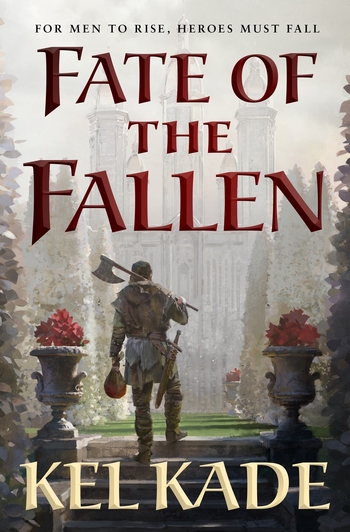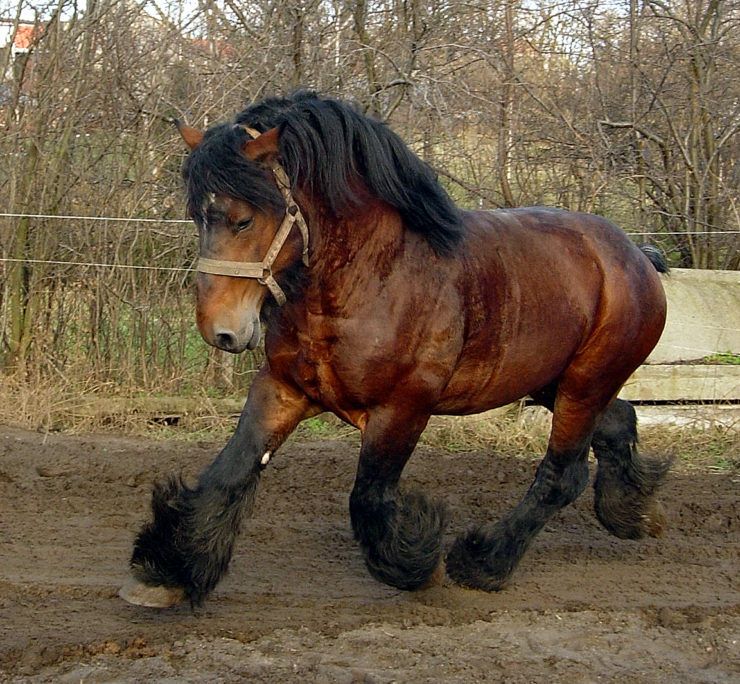Horseman’s wisdom teaches that there are two distinct types of horses, the light horse and the heavy horse, with a wide range of breeds and types in between. In the old days the light horse was called a hotblood and the heavy one, aptly enough, a coldblood. The “hot” type was represented by the Iberian and later by the Arabian and its descendant the Thoroughbred, the “cold” by the numerous breeds of draft horses including the Shire, the Belgian, the Clydesdale, and the Percheron. Various degrees of crosses led to the “Warmblood” breeds and types, which are mainly Thoroughbred crosses on native European agricultural stock.
With all the romance that attaches to the war horse, the racehorse, and the ancient chariot horse, for plain and simple daily use and ongoing value to human cultures before the industrial age, there’s little to compare with the old-fashioned heavy horse. That’s the plow horse, the steady puller, the strong and patient workhorse whose labor keeps the farm afloat. He’s big, he’s sturdy. He’s calm and cooperative. He doesn’t have a lot of speed, but he can go on all day, day after day.
Modern legend would have it that he’s the descendant of the medieval destrier, but that celebrated war machine was probably more like the modern Andalusian or the Lipizzan (the latter with its substantial bone and strong build) or, though the breed itself came along quite late, the Friesian. What we know now as the draft horse is a product of selective breeding over the last handful of centuries, including breeding for size. The really, really big guys are a modern phenomenon.
Buy the Book


Fate of the Fallen
There’s a practical reason for that. The structure of the horse is most efficient around 15 hands (60 inches at the shoulder), and starts to succumb to the square-cube law as it approaches 16 and 17 hands (64 and 68 inches respectively). Very large horses not only struggle to support their own weight, let alone that of a rider, but they’re also extremely expensive to feed and care for. Keeping those huge legs and feet healthy and functional requires regular, expert shoeing, and maintaining weight and condition calls for significant amounts of fodder.
The basic draft model is not necessarily huge. He can be bred to weigh a ton and more, but the root stock most likely is an adaptation to the climate of northern Europe. The ancestral heavy horse may have looked like, and been no taller than, the modern Norwegian Fjord horse or even the Icelandic or, believe it or not, the Shetland pony. Heavy bone, upright shoulder, short, broad back and strong, sloping quarters: He’s built for strength and he’s designed to pull.
One of the characteristics that even non-experts can recognize in the modern draft horse is the thick mane and tail and the luxuriant feathering on the lower legs. Especially that last: It’s distinctly absent in the hotbloods with their delicate, finely haired legs and small feet.
Modern draft breeds have cultivated this distinction. Rich, flowing feathers are the pride of the Clydesdale and the Shire horse and their lighter, Spanish-crossed cousin the Friesian. Not so much in the Percheron or the Belgian, but those show their kinship in their massive build and powerful quarters.
It’s all about the power. Where the light horse excels in speed and agility, the draft horse lives to pull. Not necessarily to carry—for that kind of gymnastic strength, a nice sturdy warmblood is a better bet, a solid cob, not too tall but well built and balanced, with a strong back and plenty of lifting power—but to be hitched to wagon or plow and trained to dig in and use their mass and strength to get that weight moving forward.
It’s an amazing thing to watch a team of draft horses do what it’s born to do. If you’ve seen the Budweiser Clydesdales, you’ve seen teams born and bred to pull those huge wagons, with power that’s breathtaking close up. In county fairs, teams compete to pull massive weights, a skill that translates to (and from) clearing stumps and hauling logs and, not all that rarely, extricating motor vehicles from mud or ice or snow.
They’re still in demand in areas where heavy equipment can’t go, in terrain too rugged and remote for machines. They’re amazingly efficient for working small farms, too. Good draft horses, like oxen, can eat grass, put it back with their manure, plow the fields and clear the woods.
I always figure that when the apocalypse comes, horses will hang on. They’re too useful not to. Riding and lighter driving horses for faster-than-human transport over distance, and heavy horses to work the land. They’re two sides of the same important and historically valuable coin.
Photo by Karel van Gaasbeek, licensed under the Creative Commons Attribution-Share Alike 2.5 Generic license, via Wikimedia Commons.
Judith Tarr is a lifelong horse person. She supports her habit by writing works of fantasy and science fiction as well as historical novels, many of which have been published as ebooks by Book View Cafe. She’s even written a primer for writers who want to write about horses: Writing Horses: The Fine Art of Getting It Right. Her most recent novel, Dragons in the Earth, features a herd of magical horses, and her space opera, Forgotten Suns, features both terrestrial horses and an alien horselike species (and space whales!). She lives near Tucson, Arizona with a herd of Lipizzans, a clowder of cats, and a blue-eyed dog.










